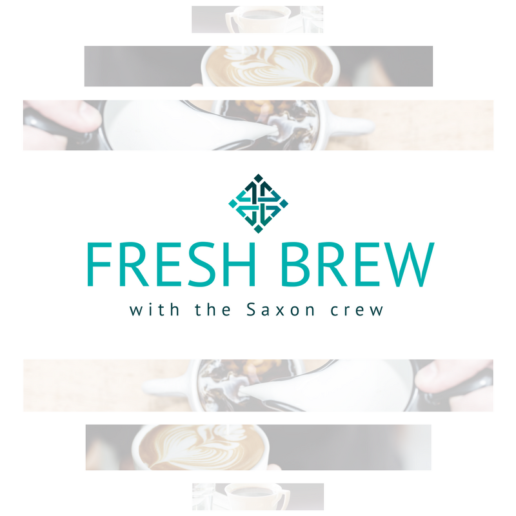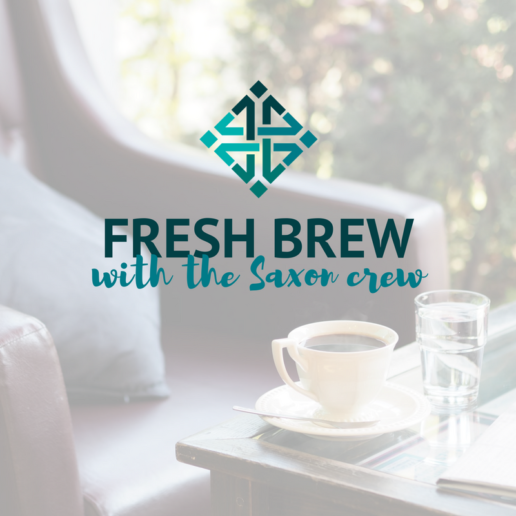'Pawternity' leave acknowledges pet owners' needs
Studies show that pet-friendly policies are trending. Are you considering implementing pet-friendly employer policies? In this article, Gurchiek lists questions employers should consider when creating pet-friendly policies.
When Anne Doussan adopted Celie, a Labrador retriever mixed breed in 2016, she had no idea her 8-week-old pup had three serious heart conditions and would require frequent trips to the veterinarian. Her boss at One-Sixteen, a real estate investment company in New Orleans, was understanding when Doussan needed to take paid time off (PTO) for Celie's appointments.
"They were incredibly understanding of my puppy's special needs," Doussan said, noting that she was allowed to report to work a few minutes later than scheduled or leave a few minutes early from her job as executive assistant. And with her supervisor's permission, she took extended lunch breaks to check on Celie. When Celie began having seizures, Doussan's boss let her bring Celie to work so Doussan could keep a careful eye on her. Her boss even let Celie take refuge under his own desk during rainstorms. When Celie's condition required her to stay home, Doussan was allowed to work remotely.
Doussan experienced the benefit—however informally—of "pawternity" leave. Pet-friendly employer policies are a trend, according to Steven Feldman, executive director at Human Animal Bond Research Institute (HABRI) in Washington, D.C. HABRI conducts research into the health benefits of having pets.
"Over the last five years we've seen this [trend] increase," Feldman said. "Millennials are getting pets as their 'starter kits.' A lot of Millennials, before they have children, often end up with feline or canine children as a way to start [parenting]."
In fact, Millennials are the primary pet-owning generation, slightly edging out Baby Boomers (35 percent and 32 percent, respectively), according to the American Pet Products Association.
"Those [pets] are just as much a part of their families as human kids will be later on. They're looking for … acknowledgement [from employers] of the important role of pets in their lives."
That acknowledgement can take different forms. Organizations that don't allow pets in the workplace may still offer pet-supportive benefits—pet health insurance, pet bereavement leave, time off to take a pet to the vet—that "signal you're looking at the employee's entire family," Feldman said. "These are all things that show you care."
That can translate into engagement and retention. Ninety percent of employees in pet-friendly workplaces feel highly connected to their company's mission, fully engaged in their work and willing to recommend their organization to others, according to a survey of 2,002 full-time workers in the U.S. HABRI and Nationwide, a health insurance provider headquartered in Columbus, Ohio, conducted the online survey in December.
Pets are considered part of the real estate team at AE Home Group in Baltimore, said Jeff Miller, who is a realtor for the company.
"Most of our real estate agents have dogs, and many of our clients are the direct result of time spent at the dog park," Miller said in an e-mail. "Whenever an agent gets a dog, it's like we're gaining a new team member. We'll lower that agent's client load for the month and encourage them to get involved with local dog-training groups and organizations. We find that this almost always pays off with even more clients and a larger network of homeowners and potential homeowners."
Questions to Consider
Marie Larsen, SHRM-CP, office manager and HR generalist at Searls Windows and Doors Inc. in Plainfield, Ill., said her employer does not offer pawternity or pet bereavement leave, but it would support an employee who wanted to use PTO for pet care or time to mourn.
"I've been that grieving employee and knew that I would be useless at work after putting our dog down last August. That's why we took her in on a Friday afternoon, I took the afternoon off, and my family and I had the weekend to be together and grieve. If a pet were to die suddenly, obviously the timing would be out of the employee's control," she said.
However, while Searls would allow an employee whose pet had died to take the day off unpaid if that employee had no PTO left to use, Larsen said she would struggle to recommend offering specific pet bereavement or other pet-related time off.
"Having specific days for pet care or pet grieving leaves a company wide open for problems. Having a general policy that allows employees with pets to utilize their standard PTO for furry family members might be a better overall approach," she said.
Creating a pet-friendly office takes some thought, Larsen noted. She suggested employers consider the following questions before venturing into pet-supportive benefits:
- "What constitutes a pet? A Dog? Cat? Lizard? Gerbil? Fish? Horse? Someone's pet is someone's pet, regardless of what type of critter it is. If one pet owner gets time off, ALL pet owners should get time off," Larsen said in a SHRM Connect discussion.
- "How much time would a company allow? One day per year? Two? One per pet? One day per pet might work if the employee lost one animal, but what do you do for someone who lost a tank full of fish? I had a friend who put one of her dogs down, then less than a month later had to put her other dog down. How much time off would she get? One day for each dog? More? Less?"
- "Bringing a new pet home, especially a very needy puppy or kitten, could take weeks for them to mature beyond the 'baby' stage. How much time would a policy allow for these situations? A couple of days? A couple of weeks?" she asked.
- "What do you do about employees with no pets? How do you provide similar benefits to prevent these employees from claiming discrimination?"
A specific pet policy makes sense, Larsen said, for businesses where pets are part of the culture, such as Rover.com, which provides dog-sitting services nationwide.
That's the case at Seattle-based Trupanion, which provides medical insurance for pets. The company offers its 500 employees three days of pet bereavement leave. It has had 250 dogs "and a few brave cats" in the workplace, according to Michael Nank, the company's public relations manager.
"Our pets are an important part of our culture, and they constantly remind us why we come to work—to help the pets we all love to receive the best veterinary care," Nank said in an e-mail. "When one of our employees loses a pet, we are acutely aware of the family-like bond that exists between them and their pet, and the need they may have to take the time to grieve and process the loss."
SOURCE:
Gurchiek, K (10 July 2018) "'Pawternity' Leave Acknowledges Pet Owners' Needs" [Web Blog Post]. Retrieved from https://www.shrm.org/resourcesandtools/hr-topics/benefits/pages/pawternity-leave-acknowledges-pet-owners-needs.aspx
Who are Benefits for, Anyway?
U.S. employees often decline benefits to them by their employers. Continue reading to find out why your employees may be declining their benefits.
With many Americans living paycheck-to-paycheck, U.S. employees have a significant need for financial protection products to secure their income and guard against unplanned medical expenses. However, employees frequently decline these benefits when they are offered at the workplace. Only two-thirds of employees purchase life insurance coverage at work when given the option, while roughly half enroll in disability coverage and less than one-third select critical illness insurance coverage. Why do so many employees choose not to enroll in benefits?
Is this right for me?
Some employees may opt out of nonmedical benefits because they do not believe these offerings are intended for people like them. In a recent report, “Don’t Look Down: Employees’ Understanding of Benefits and Risk,” LIMRA asked employees whether they thought life, disability, and critical illness products were “right for someone like me.”
While a majority of employees feels that life insurance coverage is appropriate for someone like them, they are on the fence about other coverages. Fewer than half believe they need disability insurance and only 36 percent feel they need a critical illness policy.
It is also noteworthy that a large portion of employees respond neutrally or only slightly agree or disagree with these sentiments, which suggests a lot of uncertainty. Given employees’ poor understanding of these benefits, many simply do not know if the coverage is intended for them.
Role of behavioral economics
Behavioral economics reveals that human behavior is highly influenced by social norms, particularly among groups that people perceive to be similar to themselves. In light of this, LIMRA asked employees if they think most people like them own certain insurance products. Their responses indicate that employees feel very little social pressure to enroll in these benefits.
Only 22 percent of employees think most people like them are covered by critical illness insurance, while 47 percent disagree. Similarly, 38 percent disagree that most people like them have disability coverage (versus only 34 percent who agree). Life insurance is the only product where a majority of employees (60 percent) think most others like them have the coverage.
Employees who believe others like them purchase benefits will tend to be influenced by this peer behavior. This could lead them to take a closer look at the information provided about these benefits and possibly enroll.
However, for the larger group of employees who think others like them do not have coverage, social pressure will discourage them from enrolling. These employees will perceive not having coverage to be the “norm” and assume it is safe to opt out, without giving these benefits proper consideration.
Who should purchase benefits?
If employees do not think insurance benefits are right for them, who do they believe these products are intended for?
Of employees who are offered disability insurance at work, only 38 percent recognize that anyone with a job who relies on their income should purchase this coverage. Troublingly, more than 1 in 5 think disability insurance is only for people with specific risk factors, such as having a physical or dangerous job, a family history of cancer, or a current disability.
Similarly, less than half of employees recognize that critical illness insurance is right for anyone. One in five think this coverage is only for people with a family history of cancer or other serious illness, while 15 percent believe the coverage is for people who have personally been diagnosed with a serious health condition.
Employees have a better understanding of life insurance. Eighty percent of employees recognize that life insurance is appropriate for anyone who wants to leave money to their spouse or dependents upon their death. However, some employees still express uncertainly about this or believe life insurance is only for high-risk individuals.
Confusion about who should purchase insurance benefits is contributing to low employee participation in these offerings. To counteract this trend, educating employees to understand how these products apply to their own lives is crucial. By clearly explaining what the products do and providing examples of how anyone could use them, benefit providers can help employees see the relevance of these offerings and help them make more informed financial decisions.
SOURCE:
Laundry, K (12 July 2018). "Who are benefits for, anyway?" [Web Blog Post]. Retrieved from https://www.benefitspro.com/2018/07/12/who-are-benefits-for-anyway/
Fresh Brew with Karie Waddell Gallo
Welcome to our brand new segment, Fresh Brew, where we will be exploring the delicious coffees, teas, and snacks of some of our employees! You can look forward to our Fresh Brew blog post on the first Friday of every month.
“Knowing the culture of your client’s employees is key to providing the perfect benefit line up.”
Karie joined Saxon back in April of 2003 as our Office Manager. She is now an Account Executive and works directly with clients to help provide the best solution for their business.
She holds a Bachelor’s Degree in Business Administration from Midway College with her Health and Life Insurance License in Ohio, Kentucky & Indiana.
Karie had been working in the financial services industry since 1999.

Favorite Brew
Vanilla Latte
“So simple. So delicious.”
Favorite place?
“I am a Starbuck’s Junkie!”
4 perks to make your employees' lives easier and less stressful
Recruit top talent with ease and confidence when considering these tips on attractive, creative and innovative employment perks.
A 2016 survey from Glassdoor found that 57 percent of people looking for jobs said benefits and perks are among their top considerations when weighing offers. So how can a company stack the deck in its favor when recruiting top talent? Although some companies limit their benefits packages to traditional offerings such as health insurance, 401Ks and paid time off, a today’s forward-thinking employers know they need to find more creative ways to offer benefits that make a genuine difference in employees’ day-to-day work and personal lives.
As competition for employees intensifies, the race to improve employer-based services is likely to result in better options for employees. Unconventional benefits options come in many shapes and forms, but they share one thing in common: the goal of saving time for employees, reducing their stress, and ultimately improving their health and satisfaction at work.
All other things being equal, companies that offer innovative perks that speak to the well-being of their employees are more likely to attract and retain the top talent in their field. Here are a few such perks to consider.
Expectant-parent counseling
You’ve thrown the baby shower, cut the cake, helped carry staff gifts to the car—and you’ve explained the company’s parental leave policy in detail. As you wave Julie from accounting off with best wishes, you’re confident she’ll come back to her desk in a few months’ time.
But the truth is that 43 percent of women who have babies leave the workforce permanently within a matter of months. Many say it’s because they don’t have adequate support at home to enable them to resume their careers. That is why companies like Reddit and Slack use a service called Lucy that provides expectant employees help before, during, and after parental leave, including 24/7 messaging and one-on-one sessions that can be done in the home or online.
As Reddit VP of People Katelin Holloway put it, “It’s not enough to simply offer parental leave; every child and family is different and has independent needs.” By helping expectant parents find resources that meet their specific needs, you’re making an investment in your workforce that pays enormous dividends in retention, productivity, and morale.
Caregiving support
A Gallup survey revealed more than 1 in 6 full-time or part-time American workers has difficulty balancing caring for elderly parents with their work commitments. This results in decreased productivity and frequent leaves of absence. Companies can help their employees cope and stay engaged with their work by providing concierge services that offer amenities such as taking elderly parents to doctor’s appointments and eldercare coaching when choosing between assisted living options.
To help reduce stress (and retain highly specialized employees), take a cue from companies like Microsoft and Facebook, which provide caregiver paid-leave programs to help employees care for ailing family members or sick relatives.
Dry cleaning at work
Sometimes it’s the little things that save time during the workday that can push the needle in your favor as a potential employer. It may sound trivial, but company-provided dry cleaning is a perk that’s proving to be a big draw in workplaces from Wall Street to Silicon Valley. Service providers pick up employees’ laundry or dry cleaning items from work and return them to a designated employer closet in their office building—one less errand, and no more lost tickets. “People have lives to live, so I try to make it easy for them to deal with any of those personal errands that could take up time for them,” said Experian CEO Craig Boundy, speaking about his company’s employee benefits programs in an interview with the The Orange County Register.
Car maintenance and service
According to the U.S. Bureau of Labor Statistics, the average American household owns 1.9 vehicles and spends around 1.5 percent of its annual income on auto maintenance and repairs. Cars are a significant investment for most of us, so the more you can help potential employees save time and money on maintaining their vehicles, the more tempting you’ll become as an employer. Growing numbers of innovative companies provide car repair services to help employees save money, find the best quality mechanics, and reduce stress associated with the entire process.
Some firms also offer on-site car wash services, giving employees peace of mind and a positive outlook as they drive home after work. Several big Silicon Valley corporations —including eBay, SanDisk, Cisco, and Oracle—use BoosterFuels to fill employees’ gas tanks while they’re at work. It saves employees time and protects them from potential accidents or robberies at gas stations.
SOURCE:
Weiss Y (31 May 2018) "4 perks to make your employees' lives easier and less stressful" Web Blog Post]. Retrieved from https://www.benefitspro.com/2018/05/11/4-perks-to-make-your-employees-lives-easier-and-le/
Benefit change could raise costs for patients getting drug copay assistance
Health plans may change with time. Know what to expect and how to respond with these tips on how to avoid unexpected changes.
Since Kristen Catton started taking the drug Gilenya two years ago, she’s had only one minor relapse of her multiple sclerosis, following a bout of the flu.
She can walk comfortably, see clearly and work part time as a nurse case manager at a hospital near her home in Columbus, Ohio. This is a big step forward; two drugs she previously tried failed to control her physical symptoms or prevent repeated flare-ups.
This year, Catton, 48, got a shock. Her health insurance plan changed the way it handles the payments that the drugmaker Novartis makes to help cover her prescription’s cost. Her copayment is roughly $3,800 a month, but Novartis helps reduce that out-of-pocket expense with payments to the health plan. The prescription costs about $90,000 a year.
Those Novartis payments no longer counted toward her family plan’s $8,800 annual pharmacy deductible. That meant once she hit the drugmaker’s payment cap for the copay assistance in April, she would have to pay the entire copayment herself until her pharmacy deductible was met.
Catton is one of a growing number of consumers taking expensive drugs who are discovering they are no longer insulated by copay assistance programs that help cover their costs. Through such programs, consumers typically owe nothing or have modest monthly copayments for pricey drugs because many drug manufacturers pay a patient’s portion of the cost to the health plan, which chips away at the consumer’s deductible and out-of-pocket maximum limits until the health plan starts paying the whole tab.
Under new “copay accumulator” programs, that no longer happens.
In these programs, the monthly copayments drug companies make don’t count toward patients’ plan deductibles or out-of-pocket maximums. Once patients hit the annual limit on a drugmaker’s copay assistance program, they’re on the hook for their entire monthly copayment until they reach their plan deductible and spending limits.
Catton put the $3,800 May copayment on a credit card. She knows her insurer will start paying the entire tab once she hits the pharmacy deductible. But, she said, she can’t afford to pay nearly $9,000 a year out-of-pocket for the foreseeable future.
“I’m talking to my doctor to see if I can I take it every other day,” she said. “I guess I’m winging it until I can figure out what to do.”
Drug copay assistance programs have long been controversial.
Proponents say that in an age of increasingly high deductibles and coinsurance charges, such help is the only way some patients can afford crucial medications.
But opponents say the programs increase drug spending on expensive brand-name drugs by discouraging people from using more cost-effective alternatives.
Switching to a cheaper drug may not be an option, said Bari Talente, executive vice president for advocacy at the National Multiple Sclerosis Society.
“Generally the multiple sclerosis drugs are not substitutable,” she said. “Most have different mechanisms of action, different administration and different side effect profiles.” Generics, when they’re available, are pricey too, typically costing $60,000 or more annually, she said.
Most MS drug annual copay assistance limits, if they have them, are between $9,000 and $12,000, Talente said.
Employers argue that the drug copayment programs are an attempt to circumvent their efforts to manage health care costs. For example, employers may try to discourage the use of a specialty drug when there’s a lower-cost drug available by requiring higher patient cost sharing.
There’s also the issue of fairness.
“From an employer perspective, everyone under the plan has to be treated the same,” said Brian Marcotte, president and CEO of the National Business Group on Health (NBGH), which represents large employers.
If someone needs medical care such as surgery, for example, that person doesn’t get help covering his deductible, while the person with the expensive drug might, he said.
According to an NBGH survey of about 140 multistate employers with at least 5,000 workers, 17 percent reported they have a copay accumulator program in place this year, Marcotte said. Fifty-six percent reported they’re considering them for 2019 or 2020.
If there is no comparable drug available, drug copayment programs may have a role to play if they can be structured so that participating patients are paying some amount toward their deductible, Marcotte said. But, he said, assistance programs for drugs that are available from more than source, such as a brand drug that is also available as a generic, shouldn’t be allowed.
In 2016, 20 percent of prescriptions for brand-name drugs used a drug copay assistance coupon, according to an analysis by researchers at the USC Schaeffer Center for Health Policy and Economics. Among the top 200 drugs based on spending in 2014, the study found that 132 were brand-name drugs, and 90 of them offered copay coupons. Fifty-one percent of the drugs with copay coupons had no substitute at all or only another brand drug as a close therapeutic substitute, the analysis found.
Advocates for people with HIV and AIDS say copay accumulators are cropping up in their patients’ plans and beginning to cause patients trouble. Drugs to treat HIV typically don’t have generic alternatives.
The biggest impact for the community their organizations serve may be for PrEP, a daily pill that helps prevent HIV infection, said Carl Schmid, deputy executive director at the AIDS Institute, an advocacy group. A 30-day supply of PrEP (brand-name Truvada) can cost nearly $2,000. Drug manufacturer Gilead offers a copay assistance program that covers up to $3,600 annually in copay assistance, with no limit on how much is paid per month.
“They’re at risk for HIV, they know it and want to protect themselves,” Schmid said. “It’s a public health issue.”
Earlier this month, the AIDS Institute was among 60 HIV organizations that sent letters to state attorneys general and insurance commissioners across the country asking them to investigate this practice, which has emerged in employer and marketplace plans this year.
Compounding advocates’ concerns is the fact that these coverage changes are frequently not communicated clearly to patients, Schmid said. They are typically buried deep in the plan documents and don’t appear in the user-friendly summary of benefits and coverage that consumers receive from their health plan.
“How is a patient to know?” Schmid asks. They learn of the change only when they get a big bill midway through the year. “And then they’re stuck.”
SOURCE:
Andrews M (25 MAY 2018). [Web Blog Post]. Retrieved from address https://khn.org/news/benefit-change-could-raise-costs-for-patients-getting-drug-copay-assistance/
LIMRA aims to shape benefits data exchange standard
How will LIMRA shape the benefits data exchange standard? Find out in this article from Benefits Pro.
LIMRA wants to help develop electronic data transmission standards for the employee benefits market.
The life and health market research group, has formed an alliance with the Object Management Group (OMG), a nonprofit technology standards group based in Needham, Massachusetts.
LIMRA has been working on the benefits market data standards issue for more than a year.
To help benefits market players develop standards, OMG has set up a Workplace Benefits Domain Task Force. The chairs of the new task force are Edie Bice of Unum; InAh Chambers of LIMRA; and Aaron Roby of Texas Life.
The task force organizers hope to develop data exchange standards for non-medical, non-retirement benefits.
The standards could apply both to group benefits and to individual benefits products sold at the worksite.
Organizers say the new task force will be open to benefits brokers, independent benefit plan administrators, benefits administration technology vendors, and insurers that offer non-medical, non-retirement employee benefits products.
The task force will start its first face-to-face meeting June 18, in Boston.
Source:
Bell A. (4 May 2018). "LIMRA aims to shape benefits data exchange standard" [web blog post]. Retrieved from address https://bit.ly/2wfIZey
These 3 industries are leading the way in HDHP adoption
Interested in knowing which industries are leadig the way in HDHP adoption? Check out this blog article.
Employers in the education, health care, manufacturing and retail sectors are using a variety of tactics to drive selection of HDHPs, with varying levels of adoption from employees, so says the report, based on anonymous employee benefit election data on the Benefitfocus Platform from more than 540 large employers in those sectors.
In the education sector, HDHPs are becoming less the exception, more the rule.
“Back in 2016, traditional health plans like PPOs and HMOs represented an overwhelming majority of health plan offerings and elections among employers in the education industry,” the authors write. “But just two short years later, things look completely different. In an industry known historically for its generous health insurance benefits, the HDHP has made remarkable gains in popularity.”
The share of employers in the education sector offering at least one HDHP has more than doubled since 2016, from 23 to 50 percent, according to the report. Employers have done a lot to make HDHPs attractive — they now pay 87 percent of the total HDHP premium and have doubled their contribution to employees’ HSAs since 2016. Their efforts have worked — 34 percent of employees selected an HDHP when given the choice for 2018, up from 20 percent two years ago.
In the health care sector, employers are encouraging consumer-driven plans with moderate success, according to the report.
“Over the past two years, employers in the health care industry have taken steps to shift more health insurance costs onto employees, while providing ways to help them manage the additional burden,” the authors write. “But there remains a long runway of opportunity for these organizations to boost adoption of the consumer-driven health care model.”
The number of employers offering HDHPs has nearly doubled in two years, with 73 percent offering at least one in 2018, up from 41 percent in 2016. However, despite there efforts, only 27 percent of employees selected an HDHP for 2018. Health care employers are likely trying to raise the adoption rate by transferring more PPO plan costs onto workers — the average employee premium contribution for a single-coverage PPO is up 24 percent from 2016.
In the manufacturing sector, despite boom in HDHP offerings among those employers, more of their workers are still opting for PPOs. “Manufacturing employers have displayed a particularly strong and growing enthusiasm for HDHPs in recent years,” the authors write. “But cost-sharing dynamics appear to be driving employees away from these plans and back into traditional health plans. Meanwhile, voluntary benefits maintain above-average popularity among both employers and employees.” The majority (88 percent) of employers in manufacturing now offer an HDHP, up from 54 percent in 2016. However, the percentage of employees electing an HDHP continues to decrease, while PPO participation grew from 36 percent in 2016, to 57 percent for 2018.
The report also found that voluntary benefits have become increasingly prevalent among manufacturers, with nearly 60 percent of employers offering at least one for 2018, up from 34 percent in 2016.
In the retail sector, employees shoulder more health plan costs, while more employers offer voluntary benefits to supplement coverage, according to the report.
“As employers in the retail industry look to keep benefit costs under control, health care is getting more expensive for their employees,” the authors write. “And while voluntary benefits offer additional financial protection for the majority of these workers, there remains a long runway of opportunity for health spending accounts to help them manage their out-of-pocket liabilities.”
Retail employers offering at least one HDHP increased from 55 percent in 2016 to 76 percent. Nearly half (40 percent) of their employees elected HDHPs, but premiums for these plans are rising, with the average annual employee contribution for a single-coverage HDHP up nearly 20 percent since 2016.
Despite HDHP prevalence, retail employers contributed 40 percent less to HSAs than the average for all employers, and employees contributed 20 percent less than peers in other industries. To supplement coverage, 56 percent of employers offered at least one voluntary benefit, up from 43 percent in 2016.
“Everywhere you turn there’s a story about rising health care costs,” says Ray August. “What employers in every industry have in common is the struggle to economically provide the best plans and care for their employees.”
Source:
Kuehner-Hebert K. (7 May 2018). "These 3 industries are leading the way in HDHP adoption" [web blog post]. Retrieved from address https://bit.ly/2FUf4Ii
Student loan benefits more popular with workers than employers
"While a student loan benefit is the most-requested financial benefit, it’s only third on the priority list for HR professionals." Find out more in this article.
If you ask them, 78 percent of employees laboring under a load of student debt will tell you that they want their bosses to provide a student loan benefit that will help them dig out.
Bosses, not so much. While a student loan benefit is the most-requested financial benefit, according to an HRDive report, it’s only third on the priority list for HR professionals.
Related: The problem with student-loan repayment benefits
It’s not just younger workers who want it, either. The 78 percent of employees who wish their jobs came with a student loan benefit includes 65 percent of workers over age 55 who have problems with current or future loan debt.
The report points to a CommonBond study that finds student loan benefits not only help to keep employees on the payroll and even better their job performance, but they also help in recruiting new talent. The study finds that 75 percent of all workers have paid for their own education via student loans, and 21 percent plan to take out student loans for a child or another family member in the next five years.
Oh, and another disconnect between boss and worker: while 75 percent of HR executives think their benefits offerings are innovative, only 50 percent of workers agree.
Money, of course, is a big worry for workers—and it’s not all about salary, with 44 million Americans weighed down by some $1.4 trillion in student debt. Worrying about lingering student loans also cuts productivity at work, in addition to subjecting workers to increasing stress, so it’s really an employer’s problem too.
Not only do students owe an average of more than $25,000 by graduation, figures from The Student Loan Report indicate that the loan default rate and delinquency rates are more than 10 percent and 5 percent, respectively—not exactly conducive to either peace of mind or high productivity at work. So employers are increasingly getting involved, considering tuition payment programs for employees who want to pursue a degree or add new skills.
And that can help both groups as employers become increasingly desperate for a more skilled employee base. It also helps employers as employee stress falls, potentially cutting health care costs as well and making workers more productive.
Source:
Satter M. (7 May 2018). "Student loan benefits more popular with workers than employers" [web blog post]. Retrieved from address https://bit.ly/2wi9yA0
Competing for talent in a Gen Z world
As 2018 progresses, HR managers are well advised to start stepping out of their comfort zones. Because Generation Z is beginning to surge into the workplace, forcing the reinvention of everything from benefits to recruiting. Your relevance in the war for talent may hang in the balance.
You’ve been hearing for some time now about the challenge of engaging a multi-generational workforce. But it’s time to think beyond the Millennials, and take a good look at the Gen Zs (born after 1995). They have a whole new set of expectations and values that are forcing employers to re-evaluate how they recruit, retain and, especially, engage their people. Start working on your battle plan in 2018 (and beyond) to avoid losing the talent battles.
They have decided views on how they expect to be treated and managed and how they respond if they don’t think their employer is measuring up. It’s a function of their upbringing in a hyper-connected world. According to Pew Research, only 14 percent of U.S. adults had Internet access in 1995, but that exploded to 87 percent by 2014. Small wonder that for the Zs, it’s the always-on and available tech-enabled connections to networks of people and information that rule. It’s how Zs learn and solve problems and it influences their expectations.
Here’s what it all means for your workplace and how you will need to compete for talent moving forward.
Legacy benefits and old attitudes need replacing now
The Zs aren’t merely connected. They share aggressively. Studies show that if their experiences – with a brand or a product or an employer – are negative, this generation will happily tell everybody about it online, including on Glass Door, a fast growing site that reviews millions of employers. That makes it important to foster a positive culture and work environment, and provide the types of benefits that will attract the Zs, keep them happy and ideally inspire them to spread the word.
To that end, take a long, hard look at your employee benefits: Too many employers still offer legacy employee packages that have changed little in the last two decades. Will they be good enough to woo the Zs and keep them satisfied? In fact, the Zs are motivated by the total deal, not just financial compensation. They want unique benefits that are personalized for them right down to the individual level.
Think about the 22-year-old who’s working in an urban setting, maybe with a pet at home, doesn’t have a lot of time to shop and is saddled with student loans. What are the priorities? A plan offering vision, life or disability insurance? Or a benefits package that provides a personal concierge and maybe dog walker, student loan repayment and an identity theft program, too? Best-of-class employers will offer up a robust mix of traditional and non-traditional benefits that cater to the individual employee’s lifestyle needs.
VR and gamification: Critical tools in winning Gen Z talent
Even as the Zs mature, there’s a trend toward a blending of personal and work lives as outside influences bleed into the workplace. When it comes to virtual reality, this generation of digital natives is enthusiastic over its potential use in the workplace.
There’s been a 250 percent jump in VR companies since 2012 and the technology’s significance is for more than just promoting productivity by connecting people in different locations for virtual meetings. It’s also a good recruiting tool, a way of letting prospective hires “experience” your environment so they are better able to tell before they take a job if it’s right for them.
Gamification is another Z activity that’s bleeding into business and affecting recruitment and hiring. Picture Silicon Valley’s “code-offs,” where prospective developers compete during a set time period to find the best solution to a specific design challenge. The winner gets the job. It certainly makes resume screening seem obsolete by comparison.
This incoming generation has a lot to offer employers who value the kind of fresh perspective it represents. The next big challenge will be reflecting that appreciation in creative approaches to winning and keeping their hearts and minds.
Read the article.
Source:
Barone M. (1 March 2018). "Competing for talent in a Gen Z world" [Web Blog Post]. Retrieved from address https://www.benefitspro.com/2018/03/01/surge-of-gen-z-workers-changing-how-employers-comp/
Millennials, tech industry driving adoption of paid leave programs
More employers are voluntarily offering paid leave benefits to win over millennial workers in an increasingly competitive marketplace, but costs related to workforce management and thin profit margins in many industries have hampered widespread voluntary adoption, according to The Paid Leave Project’s report, “Emerging business trends in paid family medical leave.”
The project, an initiative managed by “action tank” Panorama, interviewed representatives from 470 large U.S. employers across 23 industries to find top reasons for voluntarily offering paid leave programs – as well as main barriers to offering such benefits.
The leading factor that prompts most companies to voluntarily offer the benefit is employee demand, particularly from millennial workers who hear about other companies’ paid leave policies from the media as well as from their friends and family members who receive such benefits. More than 40 percent of companies that already have paid leave cited this as a driver.
Some employers say they want to be considered a “best employer” within their industry. Says a representative from a manufacturing company: “A company can choose to be in the middle of the pack, but we don’t see that as a competitive advantage. We want to be leaders.”
Employers in specialized industries or geographies with a tight labor market say a compelling benefits package, including paid leave, is key to attracting and retaining top talent. “The war for talent is pretty bad,” says a representative from an aerospace company. “We are taking a deeper dive at looking to expand (our) total rewards.”
The tech industry is leading the way, with employers like Netflix and Spotify, respectively offering 52 weeks and 26 weeks of parental leave. Part of this is because other industries are increasingly needing tech talent as the “digital revolution” is now transforming their own sector, including transportation, retail, telecommunications, healthcare, and manufacturing. Some companies in these industries are directly reaching out to technology companies to benchmark against their benefits.
The main challenge to offering paid leave is cost, including paying for a resource to temporarily fill a role while also funding the employee’s leave,
“Employers from retail, manufacturing, transportation and others with a high concentration of hourly workers indicated that coverage is particularly challenging for their sectors,” the authors write. “Given the nature of production and frontline roles, it can be logistically complex for such workers to cover their coworkers’ duties in addition to their own.”
Those industries with low profit margins, such as retail and transportation, find it particularly difficult consider offering paid leave because it just isn’t financially viable, they contend.
Says a representative from a nationwide retailer: “How can I offer paid leave when I can’t even offer comprehensive healthcare, including dental insurance?”
However, a handful of employers in these industries who have embraced paid leave are seeing positive results, including outdoor clothing and gear retailer Patagonia, according to the report.Over the last five years, 100 percent of the women who have had children while working at Patagonia have returned to work. This has led to a balanced workforce and about 50 percent representation of women in all management levels.
For those who offer paid leave, many are also implementing “wrap-around” supports to complement the benefits, such as flexible work schedules to ramp on and off when employees return from leave, providing private locations for mothers to breastfeed, and employee resource groups for new parents. More and more employers are also expanding paid leave for those are providing caregiver services to elderly or disabled family members.
Organizations such as DMEC, the Integrated Benefits Institute (IBI), and providers such as LeaveLogic offer valuable research, tools, and resources for employers as they roll out or expand benefits, according to the report. Moreover, The Paid Leave Project, in collaboration with the Boston Consulting Group, created a comprehensive paid leave Playbook for employers, which includes cost calculator and industry benchmarking data; paid leave policy template; tips for employers in states with new paid leave laws were recently added; and paid Leave best practices and case studies of companies that offer the benefit.
The latest report builds on earlier work by The Paid Leave Project and the Boston Consulting Group, which in 2017 released “Why Paid Family Leave Is Good Business,” a summary report from initial research into the paid leave practices of more than 250 U.S. companies.
In 2018, The Paid Leave Project will focus its research on industry-specific dynamics, the challenges for companies in states with current or pending legislation, and how employers are tracking paid leave data, results, and return on investment.
Read the article.
Kuehner-Hebert K. (2 March 2018). "Millennials, tech industry driving adoption of paid leave programs" [Web Blog Post]. Retrieved from address https://www.benefitspro.com/2018/03/02/millennials-tech-industry-driving-adoption-of-paid/













